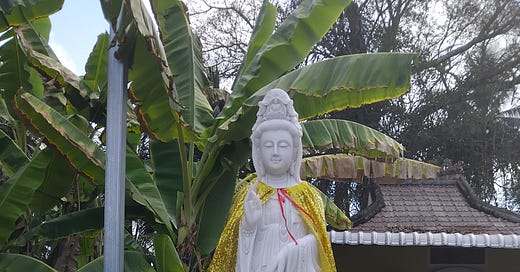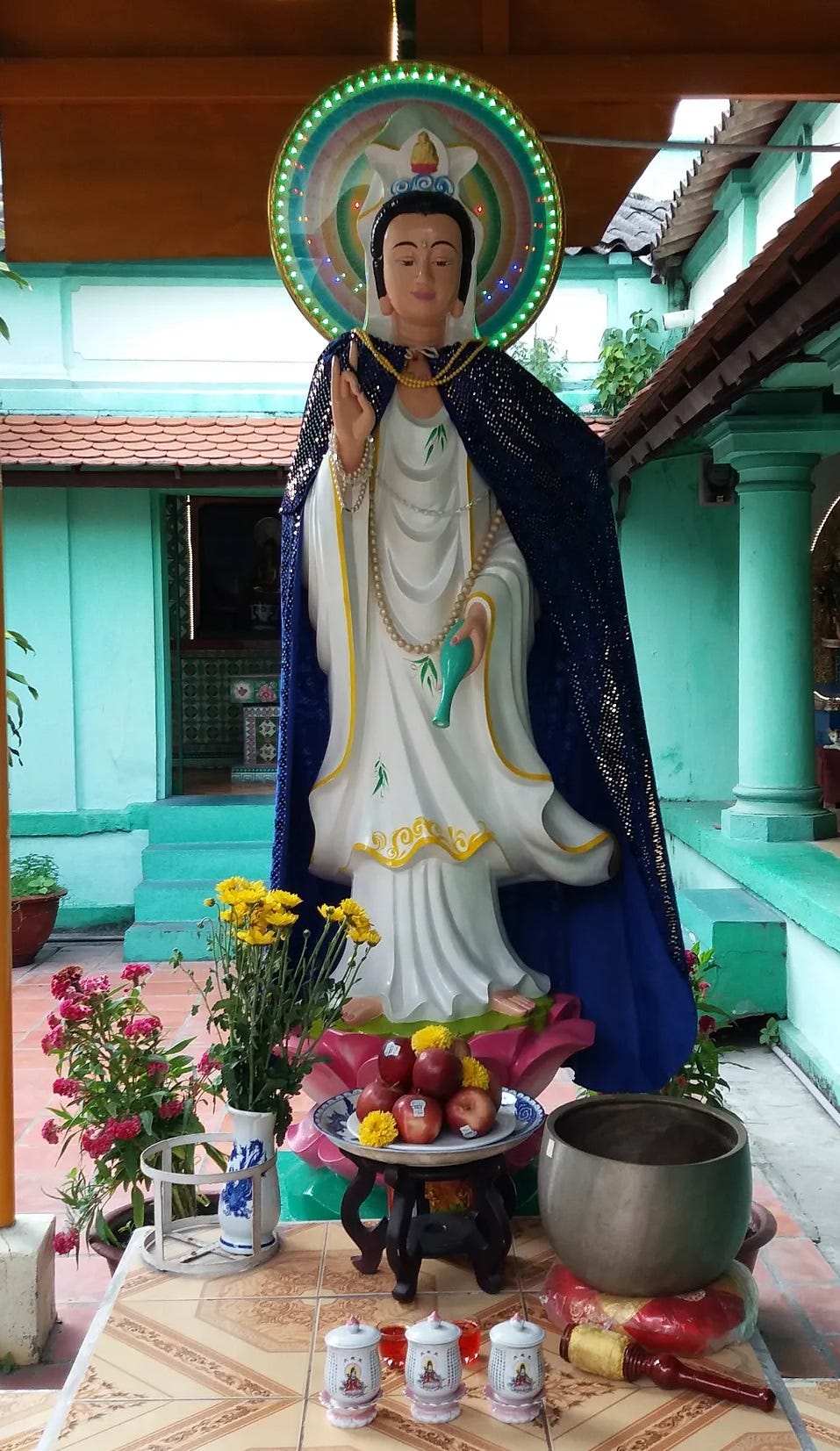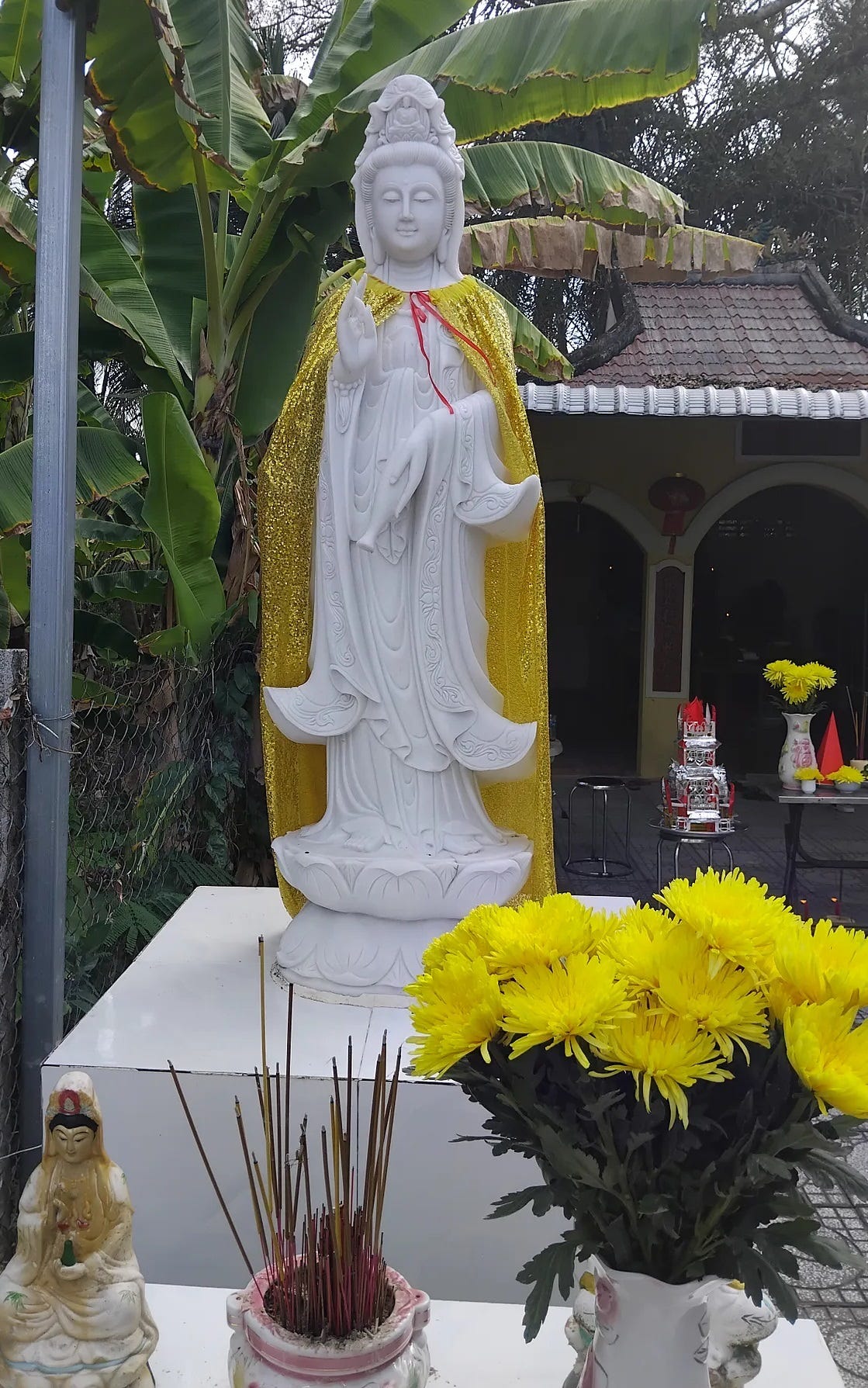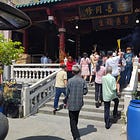Who is Quán Âm?
Quán Âm can be seen in her massive statues around Vietnam or as the venerated statue at a temple or pagoda, but you probably haven’t realized her significance. She is the most common Buddhist statue you will probably see around Vietnam. She is typically depicted in white marble (or marble like resin) or is sometimes painted ceramic at a shrine. Quán Âm can also be found in a high temple overlooking a body of water or the ocean as you might see in the famous Linh Ứng pagoda overlooking the bay in Đà Nẵng.
There are so many reasons why she is beloved by Vietnamese, with some reasons attributed to her compassion and kindness. She listens to the prayers and cries of suffering people. She offers comfort and assistance to those in need. She is considered highly generous and is sometimes one of the many gods one might pray to for good fortune. Quán Âm is the female Buddha (not to be confused with the historic Buddha, Siddhartha Gautama who was the first Buddha).
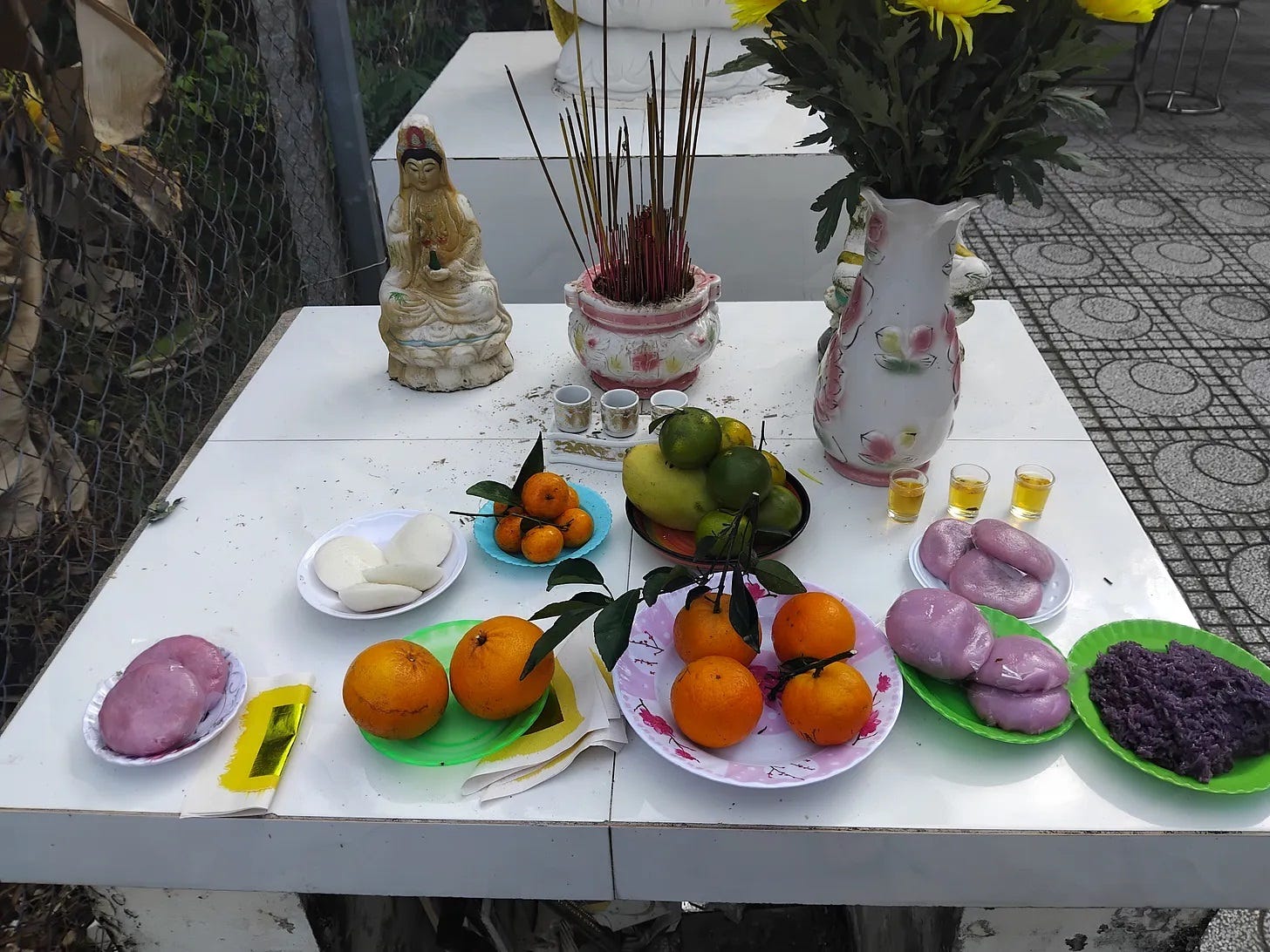
Quán Âm is the most well-known Buddha in Vietnam. In Vietnam, she is only seen depicted in her female incarnation, although she started off as the male Avalokiteśvara. Buddhists say women cannot achieve the Buddha level of enlightenment, but some say this Buddha received enlightenment as a male and later became a female, in her next incarnation, to better reflect her compassion. This switch of genders occurred in China in the 11th century. She became a dominant symbol of Buddhism throughout many of the sea faring nations which interacted with the Chinese, all around South East Asia.
Legend of Quán Âm
Symbolism of the Statue
Oftentimes Quán Âm will be adorned in flowing white robes and standing on a lotus flower. She is commonly depicted in her graceful female incarnation holding a willow branch in her right hand, which represents healing and a down-turned vase in her left hand, signifying cleansing and purification. The vase of water is “one of the eight symbols of good fortune, containing pure water capable of relieving suffering.” Occasionally the willow branch may be replaced with a meditative hand pose, with the center or ring finger touching the thumb, symbolizing teaching.
The lotus flower is symbolic of a person obtaining the Bodhisattva status. The phrase Bodhisattva (Bồ Tát in Vietnamese) is a person who has gained enlightenment. This person dedicates their lives to helping others, deciding not to enter Nirvana in hopes of teaching humanity the ways of the noble path. All bodhisattvas take an oath to lead all sentient beings from suffering before allowing themselves to become fully enlightened buddhas.
Similarities with Virgin Mary
There are plenty of similarities to be drawn between Quán Âm and the Virgin Mary. She is a blend of the religions of Vietnam, merging Christian and Buddhist beliefs into one figure to unite observers into a united community.
In their shared iconography both figures are often seen holding a Rosary necklace (Mala in Buddhism). Both the Virgin Mary and Quán Âm are sometimes depicted holding a child, representing their roles as protectors and nurturers. Both are associated with purity and innocence, symbolized by their depiction in white or light-colored flowing attire. Both have achieved high heavenly accolades for their virtues of purity and compassion.
When the original missionaries travelled to Vietnam, they may have immediately felt a connection to this female Buddhist icon and may have considered both icons to be the same.
It is common to see Quán Âm represented in both Christian churches and Buddhist temples today, although they likely represent different roles in the minds of the parishioners, their core iconography is consistent between the two religious traditions. Virgin Mary holds a higher level of veneration you may see in Latin American countries, which are shared within Vietnam. A few examples of shared iconography include: the Sacred Heart, the holy mother holding an infant, wearing the flowing light blue or white robes. If you asked the average Vietnamese Catholic, they may be a little confused if you ask the difference between Quán Âm and the Virgin Mary.
Naval Themes
Water navigation is a major part of Vietnamese culture. From the earliest days, Vietnamese were known for their sea trade, due to their proximity to several huge trading empires. This allowed merchants to be plugged into the major trade networks of the Chinese, Malay and Indian civilizations. This network of water routes extended inland, with a massive network of canals and rivers which crisscross the country. These inland water routes allow transportation from the fertile bread baskets of the Red River Valley (Hóng Hé or Sông Hồng in the north) and the Mekong Delta in the south.
There was a massive coastal trading network around South East Asia, forming the coastal silk road routes to gather up goods before they went west. There were various Chinese folk religious aspects dedicated at one time to the worship of Quán Âm.
Many of the temples of Chinese Buddhism in Vietnam use the Dharmachakra as their symbol. In traditional Buddhism, this is depicted as a wheel, symbolic of the eightfold path necessary to liberate oneself from Samsara and release the person into Nirvana. You may see this at the top center portion of the main temple building and notice its resemblance to a ship steering wheel. This doesn’t appear to be a coincidence as Vietnam was a naval civilization and this symbol was likely adapted from a common everyday item to elevate it to a higher spiritual level.
You may find ship shrines in some temples. These shrines seem to be dedicated to families of sailors to wish their relatives luck on their voyages. I have also seen these shrines in inland Ho Chi Minh city as well, perhaps for ships transiting the massive networks of canals around the Delta.
This shrine may be a wooden and cardboard replica of a modern transport with small cardboard or paper mâché sailors. These ships gather offerings for only a day or so for its voyage into the river or ocean with the purpose of putting the offeror’s bad luck upon the ship via the offering and send the bad luck on a voyage to a briny end. This renews the good luck of the offeror. These seem strangely out of place among the shrines to gods of the temple. They are much more reminiscent of the specialty shrines to the special gods which some temples may wish to venerate. I have written about this before when I have talked about the horse god or the tiger god shrines.
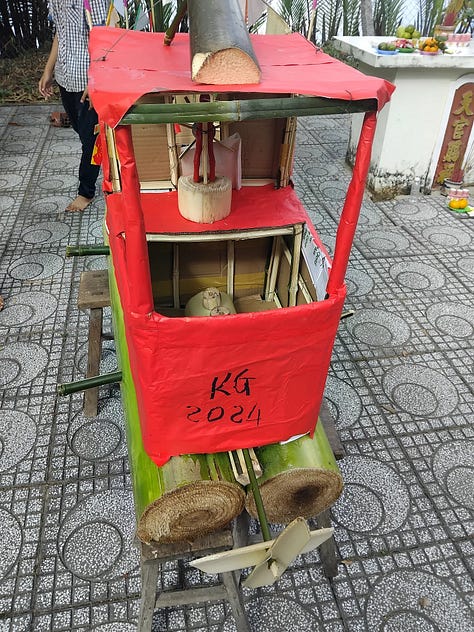
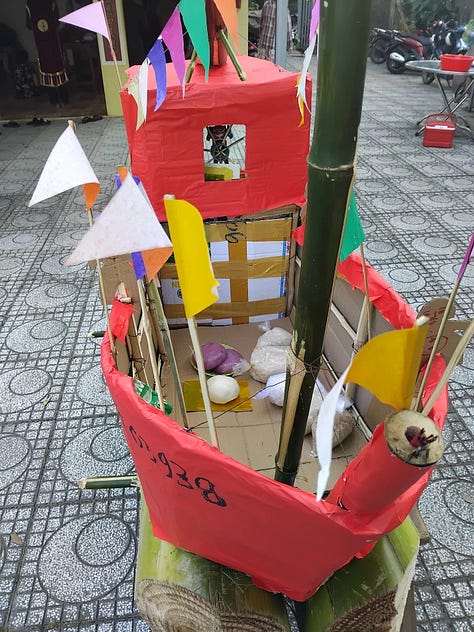
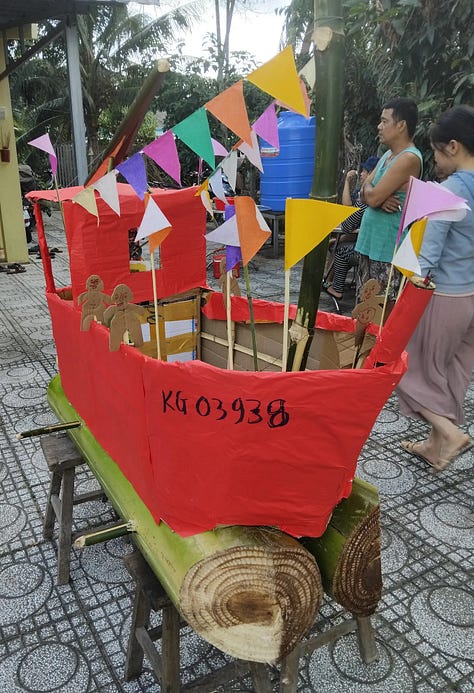
I hope this gives a little more insight to this aspect of Vietnamese culture and gives a little background to this figure you may have seen many times before, here in Vietnam. She is fascinating and deeply meaningful to the Vietnamese people and is an important part of the culture.
If you want to read a bit more, this website was really helpful giving me the information I needed to get started.
Here is a great website to find white marble images of this figure which also briefly mentions the feng shui of placing it in your home and a bit about the symbolism of the statues.

